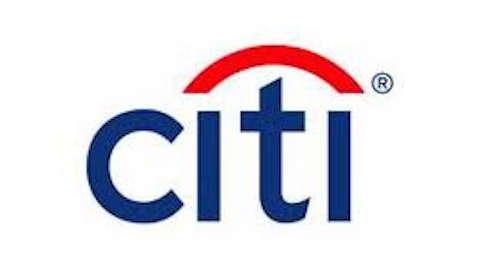At this point, there are few things that would shock an informed investor about Bank of America Corp (NYSE:BAC)‘s lamentable decision to purchase Countrywide Financial. It’s for this reason many people were taken by surprise earlier this week with news that the bank had sought and received approval from its primary regulator to put the mortgage unit into bankruptcy if the latter’s liabilities threatened the bank’s solvency. If true, as Reuters’ Alison Frankel noted, it would be the “first tangible indication that Bank of America Corp (NYSE:BAC) ever did more than hypothesize bankruptcy for Countrywide.”
The issue came up in the ongoing hearing over whether an $8.5 billion settlement that Bank of America Corp (NYSE:BAC) entered into with the The Bank of New York Mellon Corporation (NYSE:BK) and 22 institutional investors in 2011 should be approved by a judge or not. The parties to the agreement — including, among others, BlackRock, Inc. (NYSE:BLK), Pimco, and Metlife Inc (NYSE:MET) — claim that it should be because it was an arms-length transaction and represented the best estimate of what the claimants could have reasonably expected to collect from the bank given the facts at the time. The parties in opposition to the agreement, spearheaded by insurance giant American International Group Inc (NYSE:AIG), claim the deal was replete with conflicts of interest between the parties and equates to a “pennies-on-the-dollar” windfall for Bank of America Corp (NYSE:BAC).
Up until now, Bank of America Corp (NYSE:BAC) has always theoretically reserved the option of putting Countrywide into bankruptcy in the event that the latter’s losses become unsustainable — by means of context, the bank has already incurred more than $50 billion in charges related largely to the defective manner in which Countrywide underwrote mortgages and marketed them to investors prior to the financial crisis. Referred to as the “nuclear option” by insiders, however, few people seriously entertained the thought the bank was actually serious about doing so. The potential damage to the bank’s reputation, not to mention its counterparties, was simply too large. Consequently, it was always assumed that the threat was only being used to gain leverage in negotiations with investors who had sustained damages from Countrywide’s malfeasance.
In legalese, the doctrine at issue here is known as “successor liability.” As a general rule, when one company buys another company, the acquirer does not assume liability for the acquiree’s preexisting legal claims. Say, for example, that Company A decides to buy Company B, but before the transaction is consummated, Company B is sued for discrimination. Just because Company A subsequently acquires Company B doesn’t mean its coffers are available to satisfy the resulting judgment. The proceeds for that must still come from Company B — assuming, of course, that its assets remained meaningfully segregated in order to do so.




